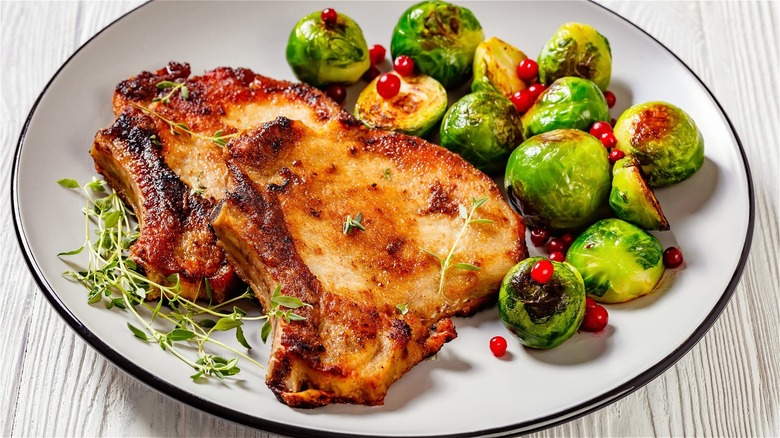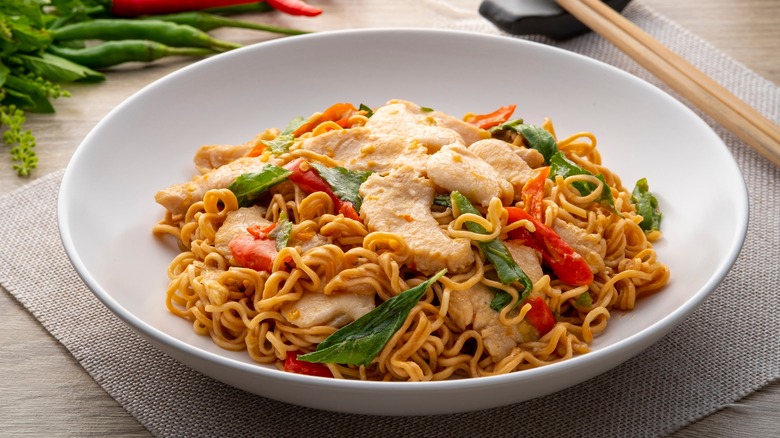The Trick To Make Dry Pork Chops Edible Is Adding Fat
For many of us, pork was ruined during childhood when fear of trichinosis drove our mothers to overcook the meat until it resembled pale shoe leather. When cooked properly, pork chops are a delicious leaner option to steak and a more flavorful meal choice than the other white meat, grilled chicken breast.
When any protein is overcooked, all the fat and juices render, leaving dry meat (muscle fibers) in the pan. Since pork chops are lean, it's easy to overcook them on the grill or pan-seared on the stove, especially when thinly cut and boneless. While there's no magic "redo" button to erase those few extra minutes of cooking, we can transform the dish into something new, masking the dried meat and salvaging dinner.
Since fat and liquid are what the pork chop has lost, fat and liquid are what we must cook with to revive the meal. Thinly slice the pork chop against the grain, shortening the muscle fibers and making the meat more tender. Cook the slices in a pan stovetop with butter or olive oil and keep the heat low since we just want to warm the meat through (it's been through enough). Add a tablespoon per chop of chicken stock, soy sauce, or another flavorful liquid to gently heat the pork without further drying it out.
Thinly slice the pork and reheat
Use the strips of pork in a stir fry or dice the pork for fried rice. This is a great way to use leftover pork that has dried up in the refrigerator. You can play around with the seasoning and liquids to change the dish each time you get distracted and overcook the pork. While it may seem like an obvious choice, avoid throwing the dry meat in a soup since it will not rehydrate.
Of course, a quicker method would be avoiding overcooking pork chops in the first place, so here are some tips. Remove the meat from the refrigerator 30 minutes before cooking. Cooking cold meat will prevent the center from reaching 135 degrees (the time to stop cooking) before the rest of the chop has overcooked. Allow the cooked pork to rest under a foil tent until the internal temperature registers 145 degrees and it's safe to consume.
There are many cooking methods for pork chops, but the oven is the safest bet if you tend to get distracted when cooking. Oven-roasted pork chops will take longer than pan-seared or grilled, but the gentler cooking buys you time to ensure they aren't overcooking. Cooking the chops over direct heat will give you caramelization and added flavor, but it will happen quickly, so don't step away. Cooking meat on the bone provides more flavor and insulates it, allowing you to cook the pork longer without drying it out.

